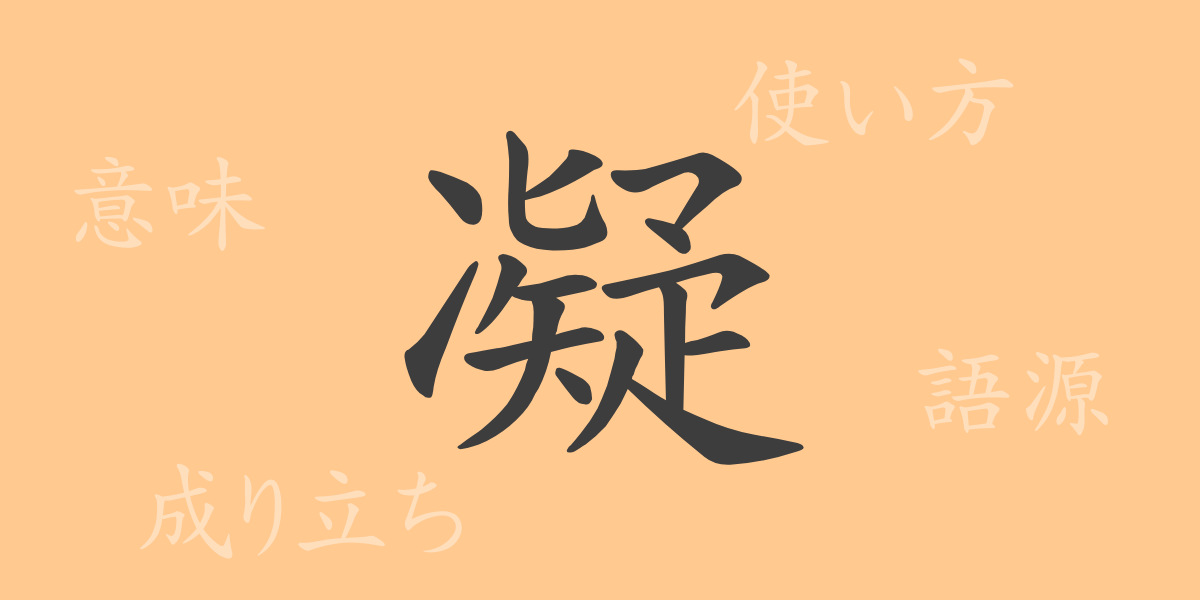In the rich world of Japanese language, each kanji carries profound meanings and nuances, contributing to the depth of the language. The kanji “凝(ぎょう)” is seamlessly integrated into everyday expressions, making it ideal for conveying intricate emotions and situations. This article delves into the history, meaning, and usage of the kanji “凝(ぎょう)” in Japanese.
Origin of 凝(ぎょう)
The kanji “凝(ぎょう)” originated in ancient China, initially used to describe the process of ice melting back into water. Over time, its meaning evolved to encompass the concepts of solidification and concentration. Introduced to Japan during the Heian period, it has since expanded in meaning within Japanese culture and language.
Meaning and Usage of 凝(ぎょう)
The kanji “凝(ぎょう)” holds multiple meanings, including solidification, concentration, and intense focus. For instance, “凝固(ぎょうこ)” refers to the process of a liquid solidifying, while “凝縮(ぎょうしゅく)” denotes the condensation or concentration of content. Additionally, “凝る(こる)” describes being engrossed in a hobby or activity. This kanji is widely used in various contexts in the Japanese language.
Readings, Stroke Count, and Radical of 凝(ぎょう)
The kanji “凝(ぎょう)” is notable for its form and sound.
- Readings: The on’yomi (Chinese reading) is “ギョウ(ぎょう),” and the kun’yomi (Japanese reading) includes “こる,” “こらす,” and “こごる.”
- Stroke count: “凝(ぎょう)” consists of 16 strokes.
- Radical: The radical for this kanji is “冫(にすい),” which is related to ice or cold.
Idioms, Expressions, and Proverbs Using 凝(ぎょう)
Here are some idioms and expressions incorporating the kanji “凝(ぎょう)”:
- 凝固(ぎょうこ): The process of a liquid solidifying; metaphorically, becoming rigid or fixed.
- 凝縮(ぎょうしゅく): Condensation or concentrating the essence into a brief form.
- 凝視(ぎょうし): Staring intently or gazing fixedly.
- 手を凝らす(てをこらす): To apply ingenuity or painstakingly craft something.
- 凝り性(こりしょう): A tendency to become deeply absorbed or obsessed with something.
Conclusion on 凝(ぎょう)
The kanji “凝(ぎょう)” is a versatile character used to express various states from physical changes to mental concentration. In the context of the Japanese language, its usage enriches communication by conveying subtle nuances. Understanding and appropriately using this kanji can enhance one’s expressive abilities in Japanese.

























